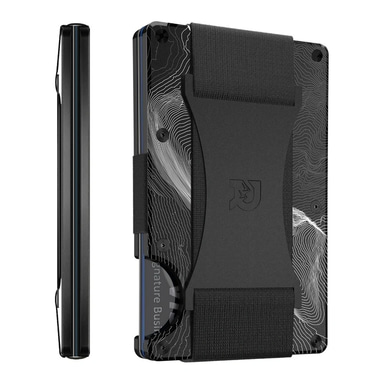Read
Edit
History
Notify
Share
Linera
Linera
Linera is a blockchain infrastructure designed to support highly scalable Web3 applications by providing predictable performance, security, and responsiveness at Internet scale. It introduces a multi-chain paradigm built on elastic validators and microchains to solve the blockspace scarcity problem common in traditional blockchain architectures. [1]
Overview
Linera positions itself as the first Layer 1 blockchain optimized for hyper-connected, real-time applications. The protocol puts users at the center by allowing them to manage the production of blocks in their own chains—called microchains—for optimal performance. This approach aims to address fundamental limitations in existing blockchain infrastructures, particularly around transaction throughput and latency. [2]
The Linera infrastructure is based on delegated proof of stake (DPoS) and focuses on providing robust decentralization through economic incentives and community-based auditing at scale. To help Web3 developers leverage the Linera infrastructure, the project has developed a rich, language-agnostic, multi-chain programming model. The initial SDK targets Rust programmers through the WebAssembly (Wasm) virtual machine. [1]
Linera applications can communicate across chains using asynchronous messages, while within the same microchain, applications are composed using synchronous calls and ephemeral sessions (resources). This architecture allows for both security and high performance in complex decentralized applications. [3]
Architecture
Microchains
At the core of Linera's architecture are microchains, which are small chains of blocks that allow applications to read and write onchain data with minimal latency. The microchain concept is fundamental to Linera's approach to scaling:
- Each user can manage their own microchain
- Microchains operate in parallel, allowing for horizontal scaling
- The number of microchains is virtually unlimited, enabling high transaction throughput
- Microchains are synchronized in real-time across validators and user wallets [2]
Validators
Linera uses elastic validators in its delegated proof of stake consensus mechanism. These validators:
- Verify transactions across the network
- Maintain the security of the protocol
- Participate in the consensus process
- Support the synchronization of microchains [4]
Cross-Chain Communication
Linera enables seamless communication between different microchains:
- Applications can send asynchronous messages across chains
- The protocol provides proof of execution for every block
- First-class interoperability is built into the system
- External web services can be queried directly from transactions [5]
Features
Linera offers several key features that distinguish it from other blockchain platforms:
Extremely Low Latency
Linera organizes onchain transactions into small parallel chains that are synchronized in real-time across validators and user wallets. This architecture enables significantly lower latency compared to traditional blockchain systems. [2]
Unlimited Blockspace
Applications on Linera can scale by distributing computation across microchains. Since the number of microchains is virtually unlimited, the platform aims to provide unlimited transaction throughput capacity. [2]
Next-Generation Smart Wallets
Linera wallets provide applications with trusted data by replaying transactions and executing web queries instantly in a local WebAssembly virtual machine. This approach enhances both security and user experience. [2]
First-Class Interoperability
The platform offers proof of execution for every block and supports querying external web services directly from transactions. This makes Linera suitable for multi-chain and multi-system applications that need to interact with various blockchain ecosystems and traditional web services. [2]
Development Tools
Linera provides a comprehensive set of tools for developers:
Linera SDK
The Linera SDK initially targets Rust programmers and leverages the WebAssembly virtual machine. It includes:
- Tools for creating and managing microchains
- Libraries for developing smart contracts
- Utilities for cross-chain messaging
- Testing frameworks [6]
Application Development
Developers can build both backend and frontend components for their applications:
- Backend development includes creating the application state, defining the ABI, writing contract and service binaries
- Frontend development tools support building interactive web interfaces
- Cross-chain messaging capabilities allow for complex application architectures
- Testing utilities help ensure application reliability [7] [8]
Use Cases
Linera's architecture makes it suitable for various use cases that require high performance and real-time interactions:
- Multi-chain DeFi: Execute user intents transparently using real-time onchain auctions [2]
- Edge AI: Run offchain yet trusted AI workflows in the Linera web client [2]
- Payments & transfers: Move assets at Internet scale with guaranteed delivery time [2]
- Gaming: Build onchain games with real-time user interactions [2]
- ZK verifier networks: Use Linera microchains to manage ZK proofs onchain [2]
- Oracles: Query the Internet from Linera transactions, secured by DPoS [2]
Ecosystem
The Linera ecosystem consists of several components that work together to support the development and operation of applications:
Development Environment
- Linera CLI: Command-line interface for interacting with the Linera protocol
- Devnets: Local development networks for testing applications
- Testnets: Public test networks for deploying and testing applications in a more realistic environment [9] [10]
Community Resources
Linera maintains several channels for community engagement:
- GitHub repository for code contributions
- Discord server for discussions and support
- Social media presence on platforms like X (formerly Twitter) and Telegram
- Documentation and educational resources [3]
Current Status
As of the documentation provided, Linera appears to be in a development and testing phase:
- A testnet is available for developers to claim microchains and publish applications
- The project is actively developing its core protocol and developer tools
- Community building efforts are ongoing through various channels [3]
The project is backed by Zefchain Labs, Inc. (doing business as Linera), which maintains the protocol's development and community engagement efforts. [2]
Node Operation
For those interested in operating Linera nodes, the platform provides documentation on:
Devnets
Testnets
- Hardware and software requirements
- One-click deployment options
- Manual installation procedures
- Monitoring and logging setup
- Troubleshooting and debugging guidance [13]
Linera
Feedback
Did you find this article interesting?
Media





REFERENCES
[1]
[2]
[3]
[4]
[5]
[6]
[7]
[8]
[9]
[10]
[11]
[12]
[13]